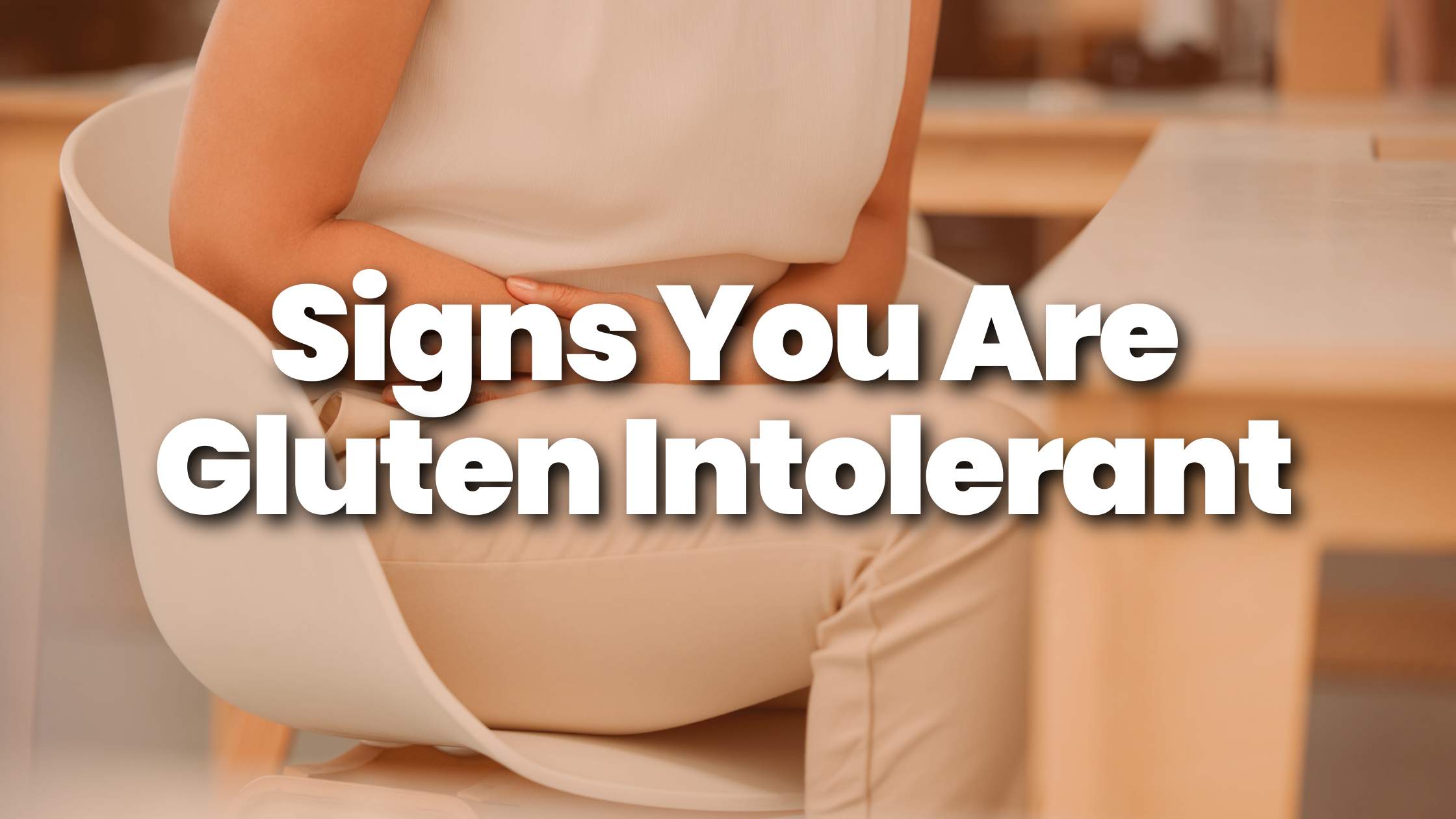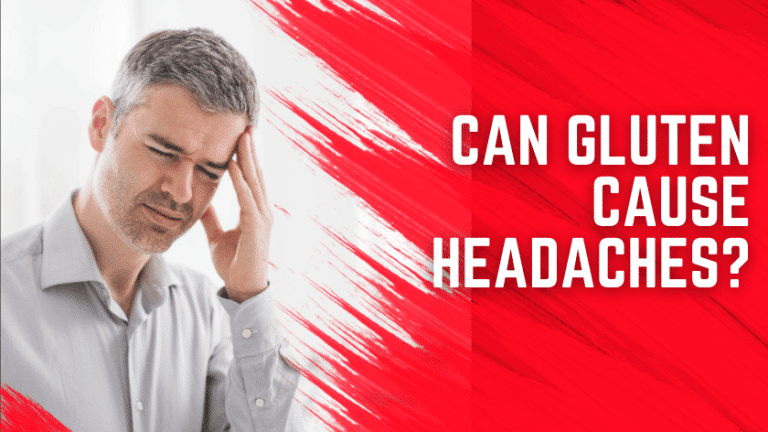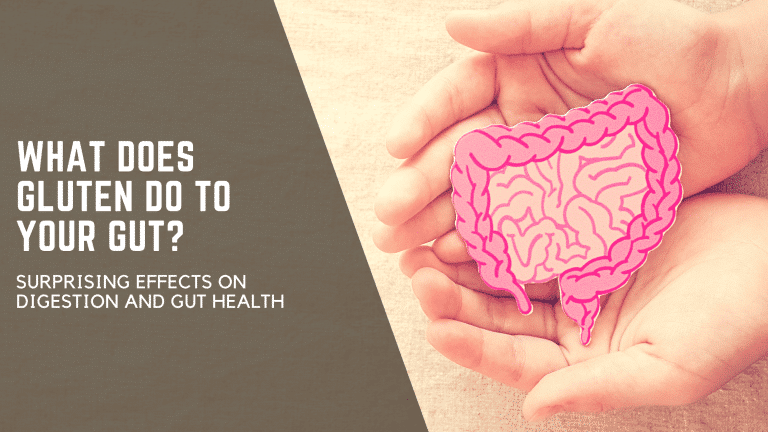Warning Signs You Are Gluten Intolerant: A Guide to Identifying The Unseen

Stomach cramps, fatigue, and mood swings are common discomforts we all experience – whether you’re a celiac or not.
But, when these become a regular affair post munching on some bread or pasta, it’s time to pause and ponder.
Could it be a sign of gluten intolerance? This post is your pal to recognize the subtle whispers of your body, urging you to skip the gluten.
While a quick scan here will arm you with the essential know-how, there’s much more to glean as you read on and learn more about the warning signs you are gluten intolerant.
Key Takeaways
- Gluten intolerance and celiac disease, though related, are distinct conditions.
- Common signs like digestive discomfort, fatigue, and skin issues hint at gluten intolerance.
- Lesser known signs include joint pain, neurological issues, and iron-deficiency anemia.
- Professional diagnosis is crucial before jumping on the gluten-free bandwagon.
- A gluten-free lifestyle, though challenging initially, is manageable with informed choices.
What is Gluten Intolerance?

Gluten intolerance, often tossed around in conversations, is more than just a trendy term. It’s a condition where your body frowns upon the protein found in wheat, barley, and rye.
Unlike celiac disease, an autoimmune disorder, gluten intolerance doesn’t launch a full-fledged attack on your intestines. Yet, it does throw a spanner in the works when you’re sensitive to gluten.
The key to differentiating between gluten intolerance and symptoms of celiac disease lies in the reaction they trigger.
While celiac disease launches an autoimmune response attacking the intestine, gluten intolerance causes symptoms that, although uncomfortable, are less severe.
The term non-celiac gluten sensitivity is often used interchangeably with gluten intolerance. A common thread is that both conditions prompt a clear signal: steer clear of gluten.
With the table set, let’s march into the common signs that scream gluten intolerance.
Common Signs of Gluten Intolerance
Feeling bloated or experiencing diarrhea and constipation post hogging on a gluten-rich meal is more than just a casual digestive upset.
It’s your body waving a red flag against gluten. These symptoms of gluten intolerance may seem like just another digestive quirk initially, but they hint at a deeper issue.
- Digestive Discomfort: The most common symptom, whether it’s feeling bloated, diarrhea, or constipation, the discomfort is real and recurrent.
- Fatigue: If you feel tired despite catching enough z’s, it’s worth paying attention to what’s on your plate. Gluten may be the culprit.
- Mood Swings: Unexpected mood swings or feeling down in the dumps may be linked to gluten intolerance.
- Headaches: Frequent headaches or migraines post munching on gluten-rich foods is a sign hard to ignore.
The link between what you eat and how you feel post-meal is stark. If gluten-rich foods lead to a digestive rollercoaster or a sudden dip in energy, it’s a sign worth exploring further.
The impact of gluten on your gut is a realm that unfolds many answers to the ‘whys’ of your discomfort.
Now, these signs are just the tip of the iceberg. There are lesser known signs of gluten intolerance that often slip under the radar. Shall we?
Lesser Known Signs of Gluten Intolerance
Diving deeper into the realm of gluten intolerance unveils a spectrum of symptoms that often lurk in the shadows.
These may not be as blatant as digestive distress, yet they hold significant clues to how your body reacts to gluten.
- Joint and Muscle Pain: The inflammation triggered by gluten can lead to aches in your joints and muscles [1]. It’s as if your body is sending out distress signals post a gluten feast.
- Neurological Issues: Ever experienced a mental fog or a tingling in your extremities after consuming a gluten-rich meal? These neurological quirks could be your body’s way of hinting at a gluten issue [2].
- ADHD-like Behavior: Gluten might have a role in hyperactivity and attention issues, mimicking ADHD symptoms. While it’s not a direct cause, the link is intriguing [3].
- Iron-deficiency Anemia Resistant to Iron Therapy: Despite popping iron pills, if the anemia sticks, gluten might be the party crasher. It hampers nutrient absorption, keeping you iron-starved [4].
- Skin Issues: Rashes and itchy bumps post a pasta party are more than just skin-deep issues. They could be reflective of gluten intolerance [5].
The narrative of gluten intolerance is not confined to the stomach. It’s a script that plays out across various systems in your body.
Why is Gluten Intolerance Often Overlooked?
Unveiling the face of gluten intolerance can be tricky, thanks to its chameleon-like symptoms in those who eat gluten and can’t tolerate it.
- Commonality with Other Digestive Disorders: The overlapping digestive symptoms with conditions like IBS often lead to a game of mistaken identity, delaying the right diagnosis.
- Symptoms Variance in Different Individuals: Gluten intolerance dons different masks in different individuals, making it a tough nut to crack.
- Misconceptions Surrounding Gluten Intolerance: The buzz around gluten-free diets often blurs the line between a dietary choice and a health necessity for people with gluten intolerance.
The quest for truth begins with shredding the misconceptions surrounding gluten intolerance and myths people with celiac disease are tired of hearing.
Professional Diagnosis: The Right Approach
Before you decide to eliminate gluten from your diet, getting a professional nod is crucial. It’s about digging to the root and not just skimming the surface.
- Importance of Professional Diagnosis: Without professional diagnosis, you might miss out on the real issue and may experience nutrient deficiencies.
- Testing for Gluten Intolerance: Blood tests, intestinal biopsy, and genetic testing form the triad for a robust diagnosis. It’s a path best navigated with professional guidance.
- Why Self-diagnosis Can be Misleading and Dangerous: Embarking on a gluten-free diet without a proper diagnosis can be like walking on thin ice.
Accuracy in diagnosis is the cornerstone to effectively managing gluten intolerance. It’s also worth noting that celiac disease is an autoimmune disease and NOT an allergy, as some may lead to you believe.
Related Article: Is Celiac Disease an Allergy?
Beyond Diagnosis: Embracing a Gluten-Free Lifestyle
With a diagnosis in hand, transitioning to a gluten-free diet is your next milestone. It’s a shift from the known to the unknown, but with a map to navigate.
- Transitioning to a Gluten-Free Diet: The first steps into a gluten-free lifestyle might seem like stepping into a culinary void. But fret not, the options are aplenty.
- Monitoring and Managing Symptoms: As you weed out gluten from your diet, keeping tabs on your symptoms will help tailor your diet to your body’s liking.
- Gluten-Free Substitutes for Common Foods: From bread to pasta, the gluten-free alternatives are both delicious and satisfying.
Embracing a gluten-free lifestyle is more than just a dietary switch. It’s about aligning your lifestyle to your body’s needs, creating a harmony that resonates with every meal you enjoy without gluten exposure.
Signs You Are Gluten Intolerant – Final Thoughts
This journey, from identifying the common symptoms of gluten intolerance to embracing a gluten-free lifestyle, is like piecing together a puzzle.
Each sign, each symptom is a piece that brings you closer to seeing the full picture.
And with a professional diagnosis, you’re not just guessing the puzzle, you’re solving it.
Armed with the right knowledge and a basket full of gluten-free goodies, stepping into a gluten-free lifestyle becomes less about missing out and more about discovering a new horizon of health and flavor.
Disclaimer: This content is based on my personal experience as an individual diagnosed with celiac disease and IBS (Irritable Bowel Syndrome) who follows a strict gluten-free diet. This does not constitute medical advice. Please consult a medical professional, nutritionist, or qualified dietitian for personalized, professional advice.






